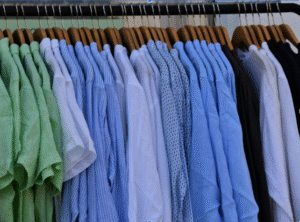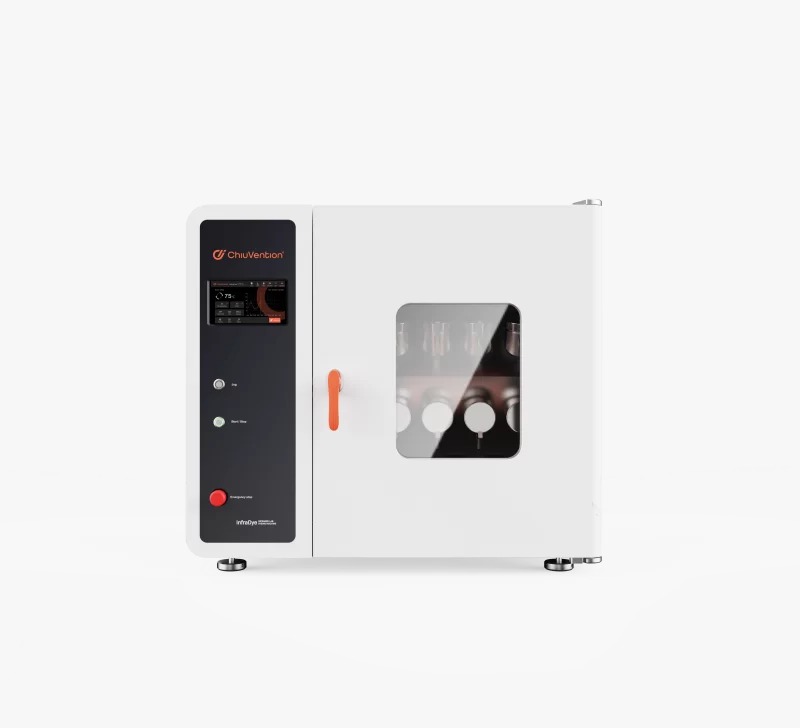In the modern textile industry, quality control is paramount. One crucial aspect of ensuring fabric quality is testing how fabrics respond to dyes under controlled conditions. Traditionally, fabric dyeing was done manually, but with the advancement of technology, automated lab dyeing machines have revolutionized the process. These machines bring efficiency, accuracy, and consistency to fabric testing, improving both product quality and production timelines. In this article, we will explore the benefits of automated lab dyeing machines in fabric testing, particularly focusing on the innovations brought by the Sample Dyeing Machine, dyeing lab equipment, and IR Lab Dyeing Machine.
The Evolution of Fabric Dyeing in Laboratories
Fabric dyeing has been an essential part of textile production for centuries. However, as demand for high-quality textiles increased and global competition intensified, the need for precise and repeatable dyeing processes became critical. Early dyeing methods were time-consuming, labor-intensive, and prone to human error. Over the years, manual dyeing methods evolved into more sophisticated processes with the introduction of automated systems.
Automated lab dyeing machines have streamlined the dyeing process by minimizing human intervention while enhancing the reproducibility of results. This has allowed textile manufacturers and testing laboratories to standardize their processes and improve their overall efficiency.
What is a Sample Dyeing Machine?
One of the most important innovations in automated fabric dyeing is the Sample Dyeing Machine. This machine is designed to replicate real-world dyeing conditions on a small scale. Textile manufacturers, especially those working with different fabric types or trying out new dyes, need to conduct numerous dyeing tests before finalizing the production process. The Sample Dyeing Machine allows them to test various dyeing conditions (temperature, time, dye concentration, etc.) on small samples of fabric, ensuring that the final product meets the desired color specifications.
The benefits of using a Sample Dyeing Machine are clear:
- Reduced Waste: By testing dyeing conditions on small fabric samples, manufacturers can avoid the waste of large quantities of fabric and dye.
- Cost Efficiency: Conducting experiments on small batches of fabric reduces material costs and allows for faster decision-making on which dyeing methods to use.
- Improved Accuracy: Automated systems reduce human error, leading to more accurate and consistent results that can be replicated on a larger scale.
- Faster Turnaround: With automated machines, the process of testing fabric dyeing takes less time, allowing manufacturers to produce samples quickly and meet tight deadlines.
By integrating Sample Dyeing Machines into their workflows, manufacturers and labs can perform extensive dyeing tests without committing significant resources, making this a cost-effective and efficient solution.
The Role of Dyeing Lab Equipment in Quality Control
Dyeing lab equipment, including a variety of automated dyeing machines, plays an essential role in maintaining the high standards required for fabric production. These Machine-TESTEX ensure that the dyes are absorbed evenly across the fabric, reducing variations in color and quality. For manufacturers, consistency is key; a batch of fabric should look the same regardless of when or where it was produced. With the help of advanced dyeing lab equipment, this consistency can be easily achieved.
Some of the core features of modern dyeing lab equipment include:
- Temperature and Pressure Control: Accurate control of dyeing conditions, such as temperature and pressure, is crucial to ensuring the fabric absorbs dye uniformly. Automated systems equipped with precise controls allow labs to reproduce consistent results.
- Real-Time Monitoring: Many machines are equipped with sensors that provide real-time feedback on how the dye is interacting with the fabric, allowing for adjustments to be made during the process.
- Multifunctional Capabilities: Modern dyeing lab equipment can often perform multiple tests simultaneously, such as colorfastness, shade matching, and dye uptake, which further optimizes the testing process.
- Integration with Data Systems: Many automated dyeing machines can be integrated with data management systems, enabling labs to track results and make data-driven decisions to improve the dyeing process.
By utilizing such equipment, textile manufacturers can enhance the efficiency of their testing processes, optimize dyeing techniques, and ultimately deliver superior products to their customers.
Infrared Lab Dyeing Machines: A Game-Changer in Fabric Testing
Among the most groundbreaking innovations in fabric testing is the infrared lab dyeing machine. These machines use infrared (IR) technology to speed up the dyeing process by applying heat energy directly to the fabric. Unlike traditional dyeing methods that rely on large amounts of water and time to achieve uniform dyeing, infrared technology allows for quicker, more efficient results.
The key advantages of using an infrared lab dyeing machine include:
- Faster Dyeing Process: Infrared heat accelerates the absorption of dye by the fabric, reducing the time needed for dye fixation. This allows labs and manufacturers to complete tests more quickly, which is especially beneficial when working with tight production schedules.
- Energy Efficiency: Infrared machines are more energy-efficient than traditional dyeing methods, as they directly heat the fabric rather than using hot water or steam. This results in lower energy consumption, making the process more sustainable.
- Minimal Water Usage: The reduced reliance on water is another significant benefit of infrared dyeing technology. This not only reduces operational costs but also addresses the growing concerns surrounding water conservation in the textile industry.
- High Color Reproducibility: The precise application of infrared heat ensures that the dye is evenly absorbed into the fabric, resulting in high-quality, reproducible colors across multiple dyeing runs.
By incorporating infrared lab dyeing machines into their testing processes, textile manufacturers can achieve faster, more sustainable, and cost-effective dyeing solutions while maintaining a high level of color consistency and quality control.
Improving Sustainability in the Textile Industry
Sustainability has become a critical focus within the textile industry, and the use of automated lab dyeing machines plays a key role in this shift. Traditional dyeing methods are often associated with high water usage, energy consumption, and the generation of waste. Automated dyeing systems, such as Sample Dyeing Machines and infrared lab dyeing machines, address these challenges by improving resource efficiency.
- Water Conservation: Automated machines use significantly less water than conventional dyeing methods, making them a more sustainable option. The use of infrared technology, in particular, eliminates the need for large amounts of water to fix dyes.
- Energy Efficiency: Infrared lab dyeing machines consume less energy due to their focused application of heat, which reduces the carbon footprint of textile manufacturers.
- Waste Reduction: By testing on small samples, manufacturers can reduce the amount of fabric waste produced during the dyeing process. Additionally, automated systems minimize the risk of errors that could lead to defective fabric, further reducing waste.
By integrating automated lab dyeing machines into their operations, textile companies can contribute to the sustainability of the industry while improving their testing processes.
Conclusion
The advent of automated lab dyeing machines has brought significant improvements to the textile industry, particularly in fabric testing. With the introduction of technologies like Sample Dyeing Machines, dyeing lab equipment, and infrared lab dyeing machines, fabric testing has become more accurate, efficient, and sustainable. These innovations not only enable manufacturers to improve their testing accuracy and consistency but also help them reduce waste, energy consumption, and water usage.
As the textile industry continues to evolve, the importance of automation in lab dyeing will only grow. Embracing these advanced technologies will not only streamline testing procedures but also contribute to a more sustainable future for the industry.













